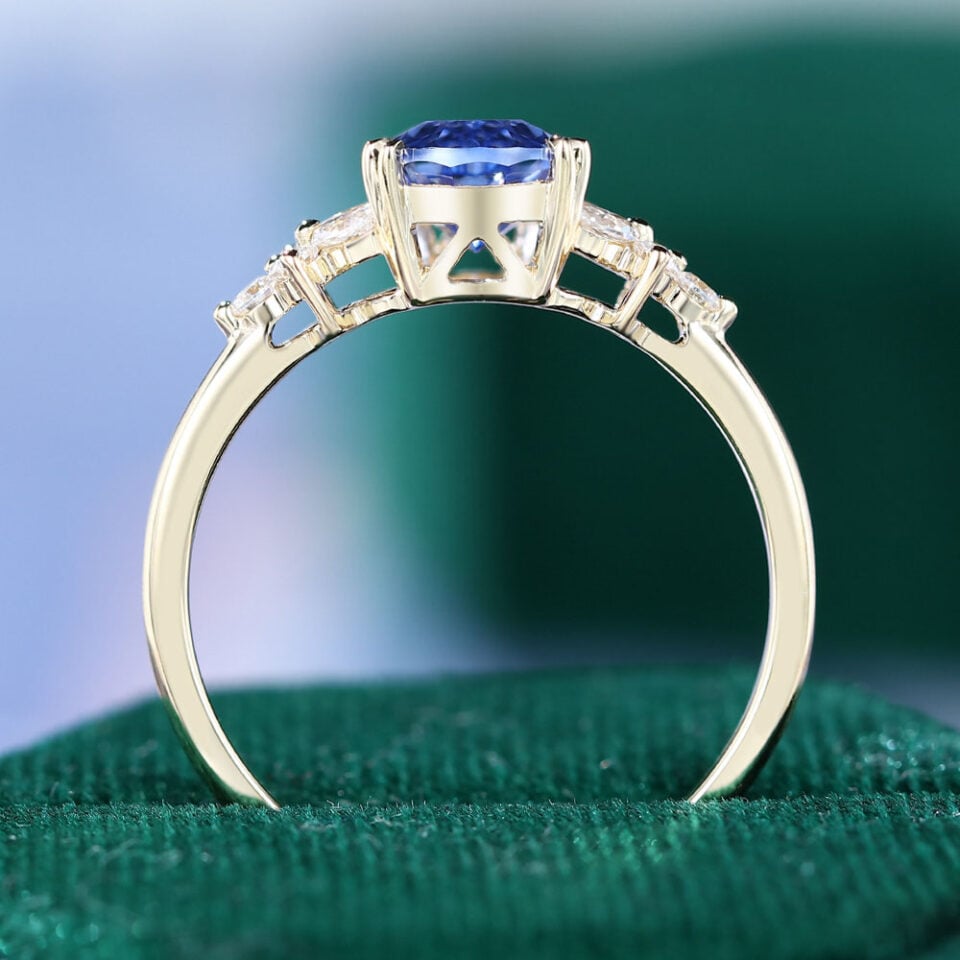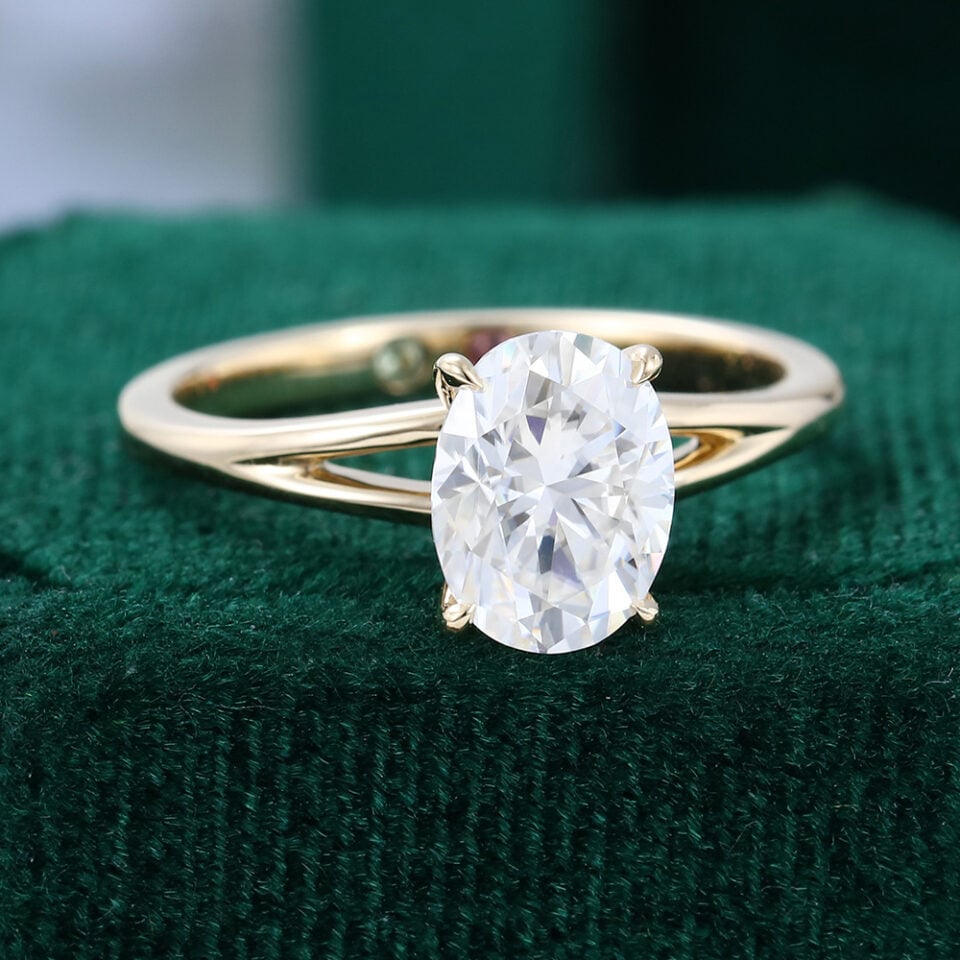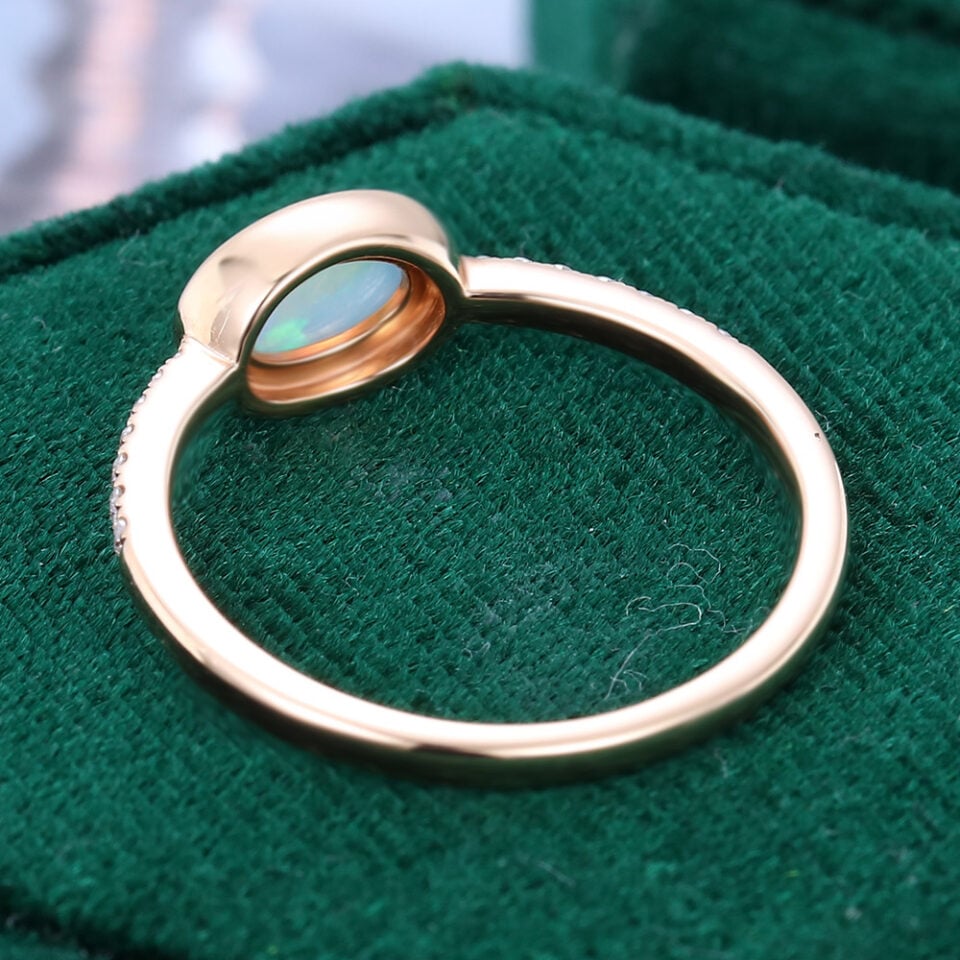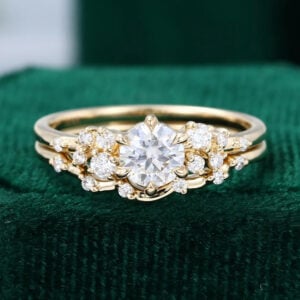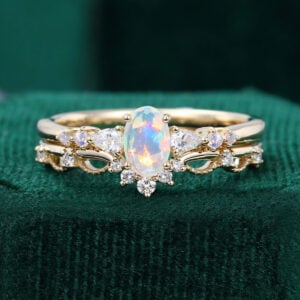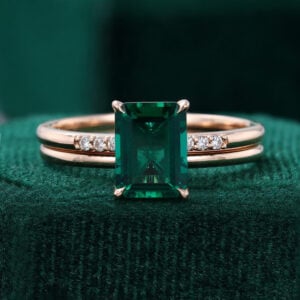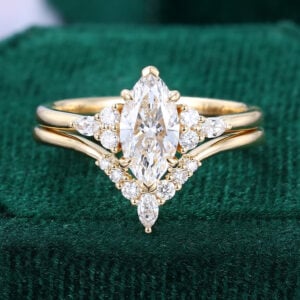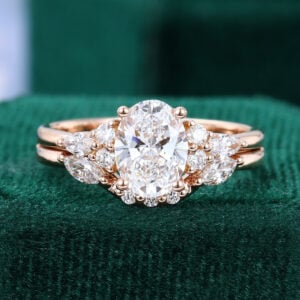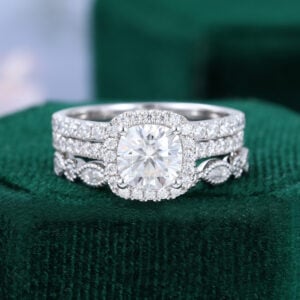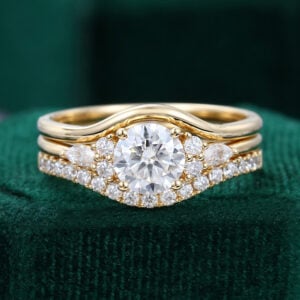Discover 5 common reasons your engagement ring and wedding band don’t stack flush—and simple fixes to achieve a seamless, gap-free look.
What Does “Flush Fit” Mean?
A flush fit is when your engagement ring and wedding band sit together seamlessly—no gaps, no awkward spaces. From the side, it almost looks like the two rings were made as one.
In recent years, more couples are looking for a flush fit. However, not all rings are designed with flush fitting in mind. If you’ve tried stacking your engagement ring and wedding band only to notice an annoying gap, you’re not alone. That small space often results from specific design and structural factors. Let’s break down the most common causes—and what you can do about them.
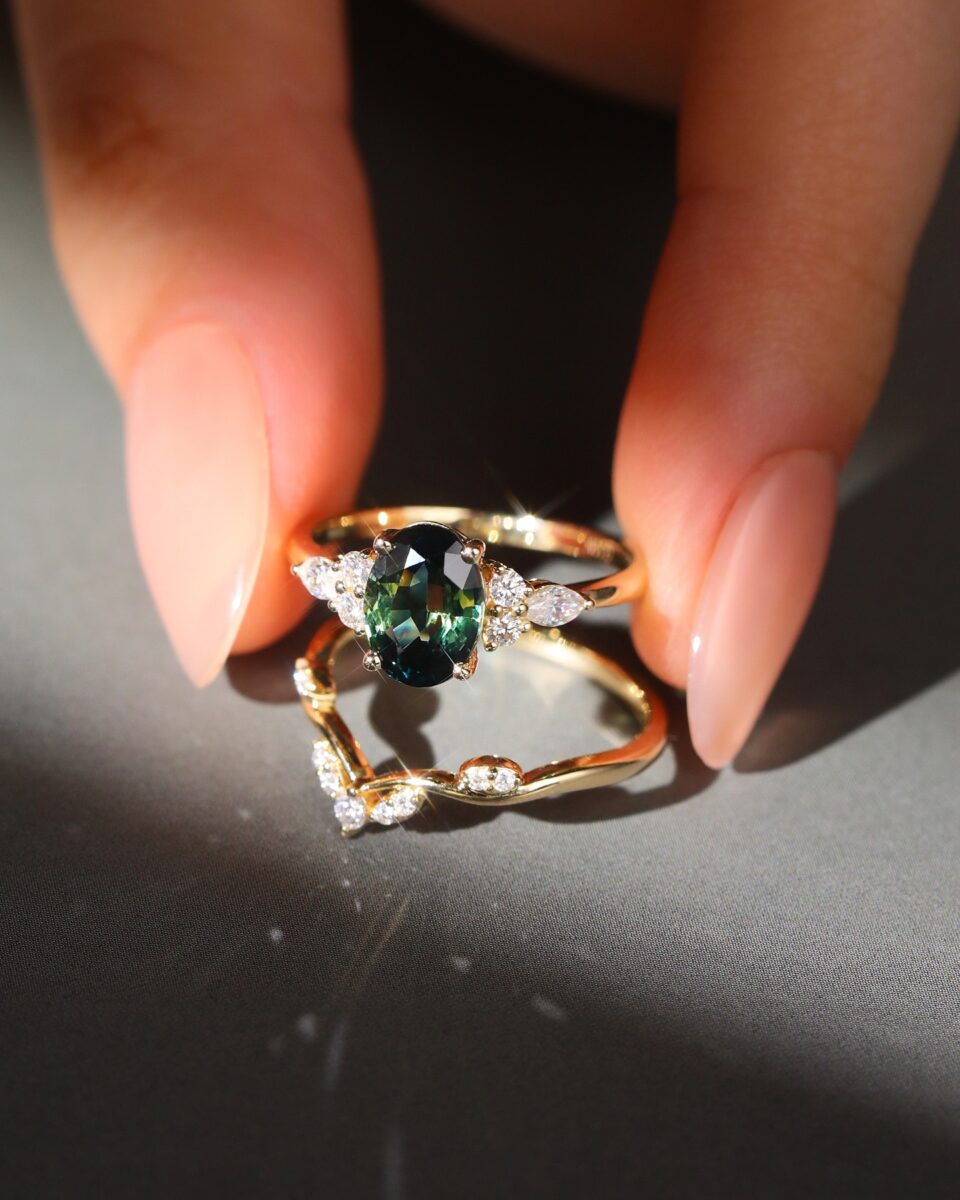
1. Setting Height of Your Engagement Ring
The height of your setting is the number one factor that determines whether two rings will fit together without a gap. Low-set engagement rings are often difficult to wear flush with wedding rings.
Low-profile settings (where the stone sits close to the finger) are beautiful and practical for everyday wear, but they often leave no space underneath for a straight wedding band to slide in. The metal basket or prongs can get in the way, forcing the two rings slightly apart.
Raised settings (High-profile settings) lift the center stone higher, creating a “tunnel” of space underneath so the wedding band can sit flush. This type of setting not only makes the center stone pop visually but also allows a straight band to fit perfectly against it.
Related: Low Setting vs. High Setting Engagement Rings
2. Engagement Ring Shank and Gallery Design
The shape of the shank (the band part of the ring) and the gallery (the structure beneath the center stone) also play a huge role in whether your rings will sit flush.
If your engagement ring has a twisted, tapered, split, or uniquely contoured shank, a straight wedding band may not align perfectly, creating uneven spacing or obstacles. In these cases, the ideal solution is a contoured or curved wedding band designed to match the engagement ring’s shape.
For a flush fit with a straight wedding band, ensure your engagement ring has straight shanks, which provide a continuous edge for seamless alignment.
The gallery design also affects the available space underneath the center stone. Intricate galleries with cut-outs, patterns, or elevated details can prevent the wedding band from sitting flush. In such situations, an open or adjustable wedding band can bypass the engagement ring’s base and achieve a smooth, flat fit.
Related: Engagement Ring Shanks: 21 Different Styles To Know
3. Center Stone Shape and Setting Style
The shape of the center stone and the type of setting both affect the ring’s overall profile and how well it can stack with a wedding band.
Round cut stones are symmetrical and usually easier to pair with flush-fit bands. Fancy-shaped stones (pear, oval, or marquise) may have pointed tips or elongated edges that can protrude, creating gaps if the setting is not properly elevated.
Prong settings use small metal prongs to secure the stone while leaving enough space for a wedding band to fit comfortably. Bezel settings encircle the stone with a full metal rim, providing excellent protection but adding bulk, which can interfere with a flush fit. Pavé and channel settings are typically placed along the shank. When the band profile is slim, these settings integrate well with flush-fit designs.
Related: Different Types of Engagement Ring Settings
4. Ring Size Differences
Even a half-size difference between your engagement ring and wedding band can disrupt a flush fit. If the wedding band is slightly larger, it may shift and leave a gap. If the wedding band is smaller, it might push against the engagement ring and tilt it, creating uneven spacing.
View our Ring Size Guide, learn how to find your perfect ring size before ordering to ensure a snug, flush fit.
5. Differences in Band Thickness or Profile
The physical profile of each band matters too.
Bands with a raised or rounded center, often called domed bands, can prevent full contact with a flat-edged ring. To create a seamless stack, it’s best to match both rings in profile, either flat-to-flat or dome-to-dome.
If one band is noticeably thicker than the other, it may lift slightly, creating a visible gap between the rings. When profile differences cannot be avoided, a custom wedding band can be designed to accommodate the height difference and maintain a smooth, flush fit.
Related: Ring Band Width and Thickness Guide
FAQ: Flush Fit Engagement & Wedding Rings
Yes, but it often requires a custom contoured wedding band or modifying the engagement ring’s setting height.
A band with a curve or notch designed to fit snugly around the profile of your engagement ring.
For many wearers, yes, because there’s less movement between the rings and fewer chances for skin pinching.
Final Thoughts
Achieving a true flush fit is part design, part personal preference. If you’re buying both rings at the same time, talk to your jeweler about how the two will stack before you commit. If you already have your engagement ring, consider a custom contoured wedding band or an open band design for the perfect, gap-free look.
✨ Explore MollyJewelryUS’s handcrafted engagement rings, wedding bands and bridal ring sets—designed to fit together beautifully, just like the two of you.

